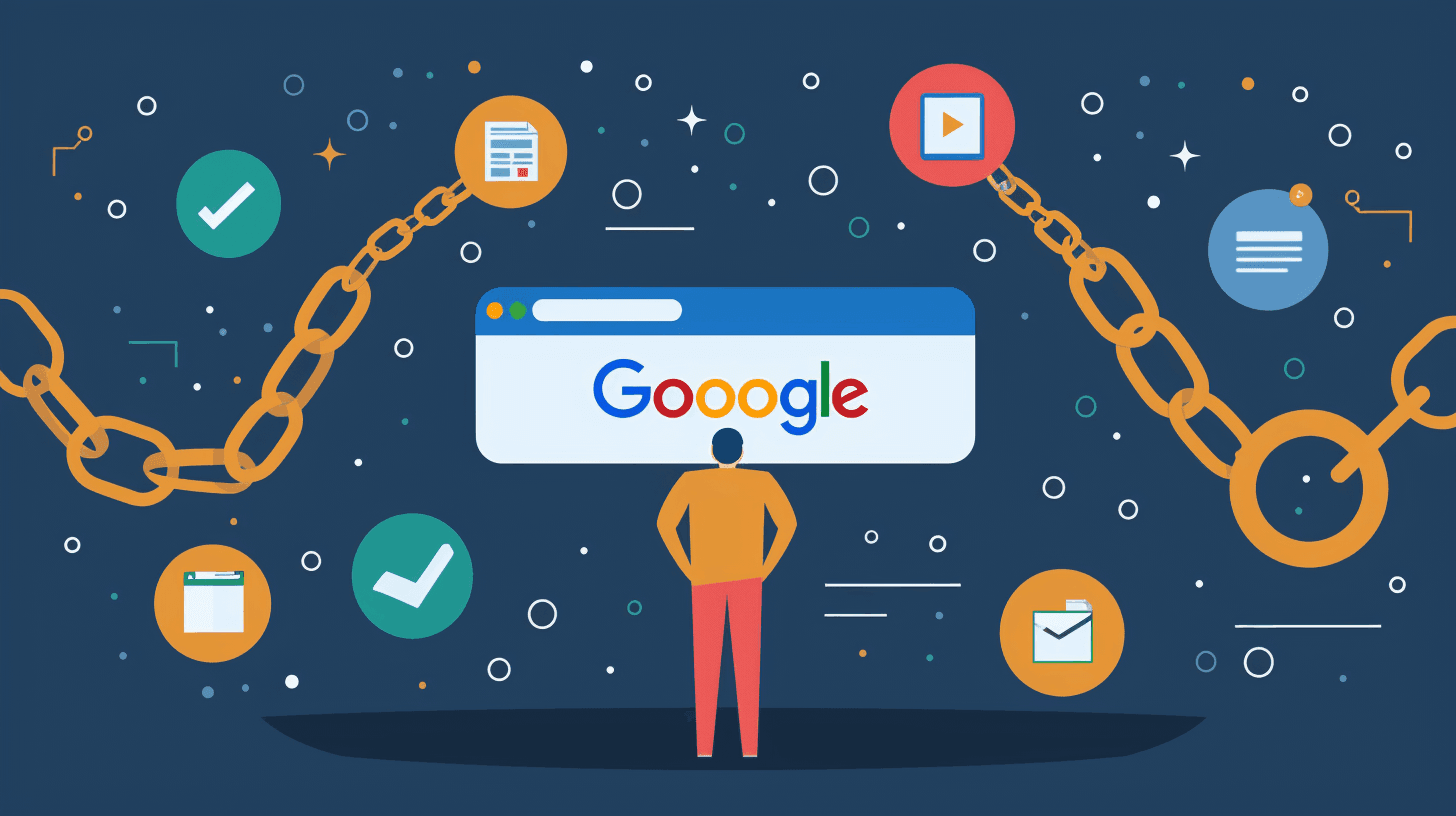Understanding LinkedIn SEO
LinkedIn SEO is optimizing your profile and content to rank higher in LinkedIn search results. Like Google, LinkedIn uses algorithms to determine which profiles and posts are most relevant to a user's search query.
By understanding these algorithms and implementing strategic optimization techniques, you can increase your chances of being discovered by recruiters, potential clients, and industry peers.
Read: What Is SEO And Why Is It Important?

Benefits of LinkedIn SEO
LinkedIn SEO offers many benefits for professionals looking to enhance their online presence and achieve their career goals. Here are some key advantages:
Enhanced professional branding
A well-optimized LinkedIn profile presents you as a credible and authoritative figure within your industry. By strategically incorporating keywords highlighting your skills, experiences, and achievements, you can effectively communicate your value proposition to your target audience and differentiate yourself from competitors.
Improved networking opportunities
LinkedIn is a powerful networking platform; strong SEO can amplify your networking efforts. When your profile ranks higher in search results, you're more likely to attract connection requests and engagement from relevant professionals.
Better career prospects
For job seekers, LinkedIn SEO can be a game-changer. By optimizing your profile with keywords related to your desired job role, industry, and skills, you increase your chances of being discovered by recruiters and hiring managers who are actively searching for candidates with your qualifications.
Showcasing expertise and thought leadership
LinkedIn SEO isn't just about getting found; it's also about positioning yourself as an authority in your field. You can demonstrate your expertise and thought leadership to your network by consistently sharing valuable content, publishing thought leadership articles and engaging with industry discussions.
Driving website traffic and lead generation
For businesses and entrepreneurs, LinkedIn SEO can be a powerful tool for driving website traffic and generating leads. By optimizing your company page and employee profiles with relevant keywords, you increase the likelihood of appearing in LinkedIn and Google search results when potential clients are searching for products or services related to your industry.
Building trust and credibility
A well-optimized LinkedIn profile instills trust and credibility in your professional brand. When users search for individuals or companies in your industry, appearing at the top of search results signals that you're a reputable and influential figure.
Read: What Is the Future of SEO in 2024?
How Linkedin Search Engine Works
LinkedIn's search engine works by indexing and analyzing the vast content and data on the platform to provide users with relevant search results. While the specific details of the LinkedIn SEO algorithm are proprietary and not publicly disclosed, here's a general overview of how it works:
Indexing content
LinkedIn's search engine continually crawls and indexes user profiles, company pages, posts, articles, groups, and other content on the platform. This process involves collecting and storing information about each piece of content to make it searchable.
Query processing
When a user enters a search query into LinkedIn's search bar, the search engine analyzes the query to understand the user's intent and context. It considers keywords, search history, connections, location, and preferences to provide personalized search results.
Ranking algorithm
LinkedIn SEO employs a complex ranking algorithm to determine the relevance and ranking of search results. This algorithm considers various factors, including keyword relevance, profile completeness, connection strength, engagement metrics, geographic and industry relevance, and user activity.
Relevance scoring
Each piece of content indexed by LinkedIn's search engine is assigned a relevance score based on its alignment with the search query and other factors. Content with higher relevance scores is more likely to appear higher in search results.
Personalization
LinkedIn's search engine personalized search results based on the user's profile information, connections, search history, interactions, and preferences. Personalization ensures that search results are tailored to each user's interests and needs.

Anatomy of LinkedIn SEO
Creating a comprehensive LinkedIn SEO strategy involves understanding the key components that contribute to optimizing your profile and content for search visibility. Here's the anatomy of a LinkedIn SEO strategy and what you need to include:
This is a key component because it lays the foundation for your LinkedIn SEO strategy. Identify relevant keywords and incorporate them naturally throughout your profile to cover a broad range of search queries. Regularly update your profile with new keywords to stay relevant.
Profile optimization
Optimizing your profile is essential for improving your visibility in LinkedIn search results. Ensure your profile fully completed with comprehensive information, including a professional photo and customized LinkedIn URL. Provide detailed work experience descriptions and add multimedia elements to enhance visual appeal.
Content creation
Publishing original content incorporating relevant keywords helps establish your expertise and credibility on LinkedIn SEO. Publish original content that provides value to your audience and contains relevant keywords. Use hashtags strategically to categorize your content and encourage engagement.
Engagement and networking
Actively engage with your network by participating in discussions and connecting with professionals in your industry. Respond promptly to messages and connection requests to build meaningful relationships.
Continuously adapting your strategy based on these changes ensures you continually optimize your LinkedIn presence for maximum impact and visibility.
Read: The Benefits Of Content Marketing To SEO
Backlinks in LinkedIn – How Do They Work?
Backlinking, which involves getting other websites to link to your LinkedIn profile or content, can indirectly impact your LinkedIn SEO. While backlinks do not directly influence LinkedIn's search algorithm, they can still have several benefits.
However, LinkedIn does not operate in the same way as traditional websites regarding backlinking. Here's how backlinks works on LinkedIn SEO:
Profile links
LinkedIn profiles have a unique URL that can be shared and accessed directly. You can include this URL in your email signature, business cards, or other digital platforms to direct people to your LinkedIn profile. While not traditional backlinks, these direct links serve a similar purpose in driving traffic to your LinkedIn profile.
Content sharing
When you share content on LinkedIn, such as articles, posts, or videos, other users can engage with it by liking, commenting, or sharing it. While these interactions don't count as backlinks in the traditional sense, they can increase the visibility of your content within the LinkedIn platform and potentially attract more profile views and connections.
External links in content
While LinkedIn SEO doesn't allow direct HTML links in posts or articles, you can still include URLs to external websites within your content. For example, you might reference a blog post or a news article in your LinkedIn post and provide the URL for users to access the full content. While these links don't function as traditional backlinks, they can drive traffic to external websites from your LinkedIn audience.
Profile visibility
LinkedIn profiles and content can also appear in search engine results pages (SERPs) outside the LinkedIn platform. When someone searches for your name or relevant keywords related to your expertise, your LinkedIn profile may appear in the search results. While these are not traditional backlinks, they can still contribute to your online visibility and authority.
Read: Getting Backlinks: Best Practices and Pitfalls To Avoid
Linkedin SEO Toolkit
There are several free tools available that can help with LinkedIn SEO:
LinkedIn Search Bar: LinkedIn's search bar is a valuable tool for keyword research. Use it to see the popular terms in your industry and among your target audience.
Google Keyword Planner: While primarily used for Google Ads, the Google Keyword Planner can also provide insights into relevant keywords that you can use in your LinkedIn profile and content.
Google Trends: Google Trends allows you to see the popularity of search terms over time. It can help you identify trending topics and keywords to incorporate into your LinkedIn content.
LinkedIn Analytics: LinkedIn's built-in analytics tool provides insights into your profile's performance, including profile views, post engagement, and follower demographics. Use these insights to refine your LinkedIn SEO strategy over time.
While these tools offer valuable insights and capabilities, remember that their free versions may have limitations compared to their paid counterparts. However, they can still be valuable resources for optimizing your LinkedIn SEO.
Read: Best SEO Tools Every Marketer Should Use

Conclusion
LinkedIn is a powerful platform for professional networking and growth. To stand out among millions of profiles, harnessing LinkedIn SEO is essential. By optimizing your profile and content, you can enhance branding, networking opportunities, career prospects, and thought leadership.
By implementing a well-rounded strategy and staying informed about algorithm changes and best practices, you can optimize your LinkedIn profile and content to achieve your professional goals and stand out in today's competitive landscape.
Keep up with seobase to learn all about the best SEO tactics!






